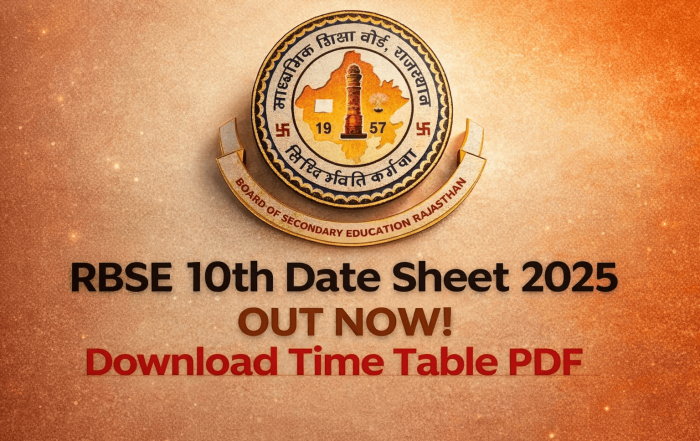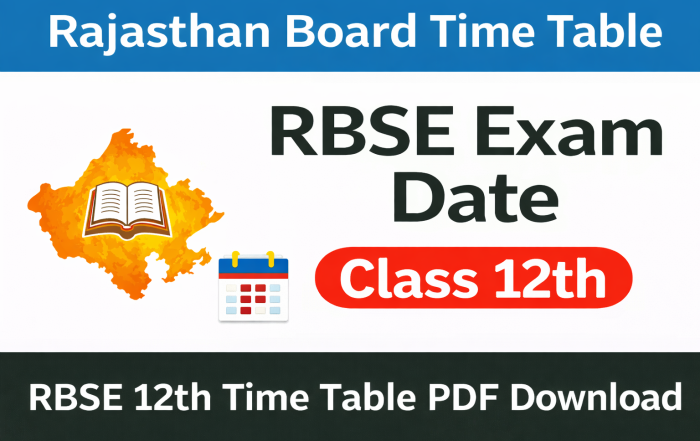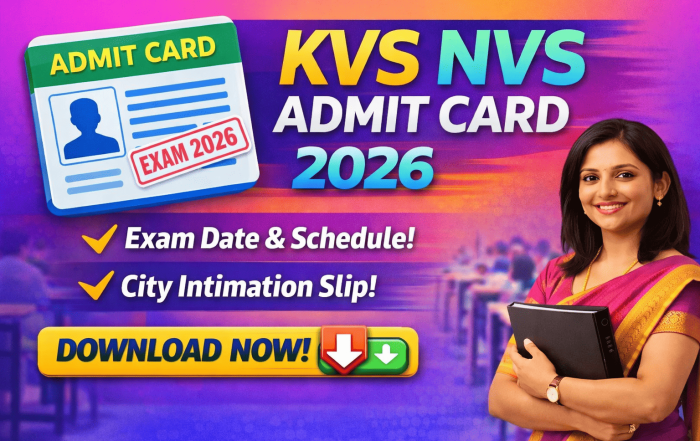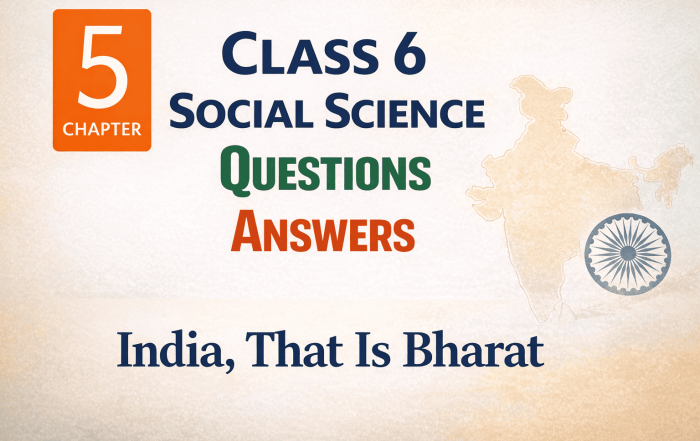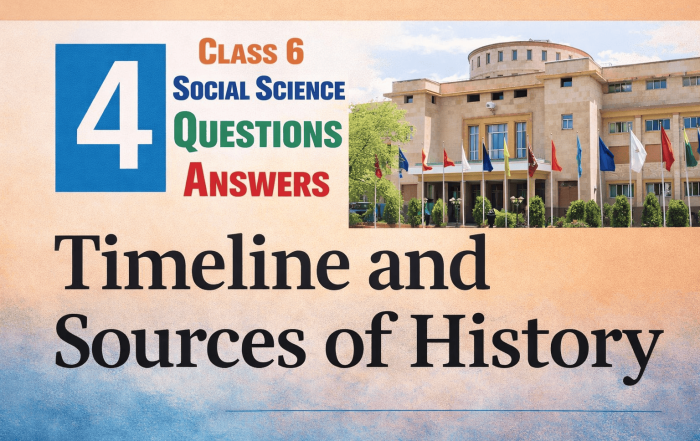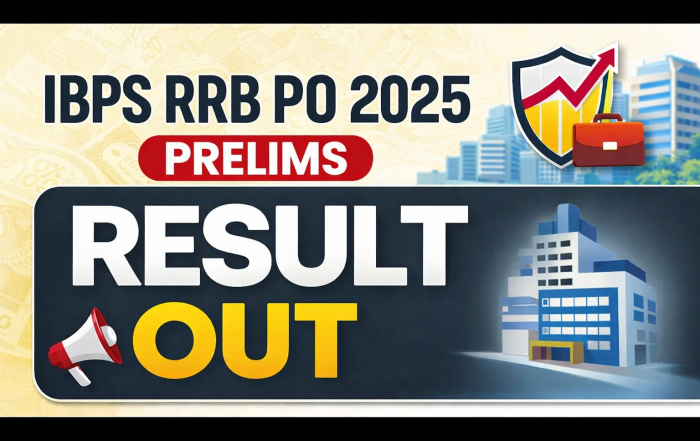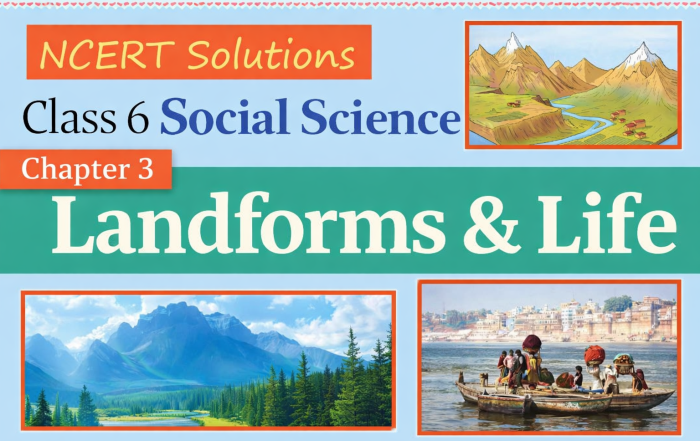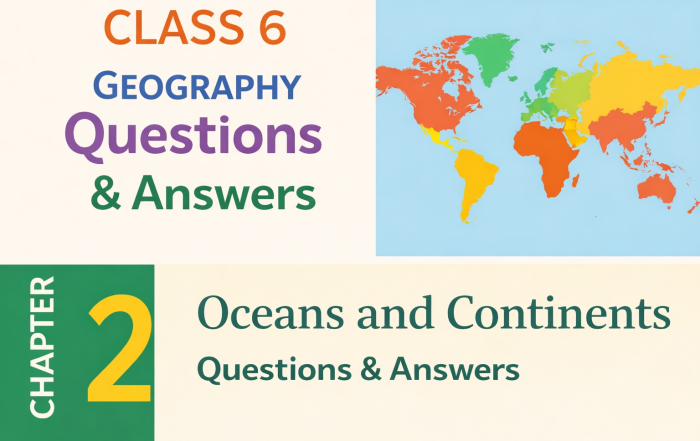RECENT POSTS
RBSE Class 10 Exam Time Table 2026
RBSE Class 10 Exam Time Table 2026 The Rajasthan Board of Secondary Education (RBSE) has officially released the RBSE Class 10 Exam Time Table 2026 for students appearing in the Secondary Examination. This announcement is [...]
RBSE Class 12 Time Table 2026 Released
RBSE Class 12 Time Table 2026 Released The Rajasthan Board of Secondary Education (RBSE) has officially released the RBSE Class 12 Time Table 2026. As a result, students appearing for the Senior Secondary board examination [...]
KVS NVS Admit Card 2026: Exam Date, City Slip & Download Link
KVS NVS Teaching & Non-Teaching Admit Card 2026 – Complete Guide The Kendriya Vidyalaya Sangathan (KVS) and Navodaya Vidyalaya Samiti (NVS) will soon conduct the Teaching and Non-Teaching Recruitment Examination 2026 for 15,762 vacancies across [...]
NCERT Class 6 History Chapter 5: India, That Is Bharat
NCERT Solutions for Class 6 Social Science Chapter 5 – India, That is Bharat NCERT Solutions for Class 6 Social Science History Chapter 5 – India, That is Bharat help students clearly understand how India [...]
NTA UGC NET JRF December 2025 Admit Card & Exam Dates
NTA UGC NET JRF December 2025 Admit Card: Latest Update The National Testing Agency (NTA) will conduct the UGC NET December 2025 examination for Assistant Professor and Junior Research Fellowship (JRF). As per the official [...]
Class 6 History Chapter 4: Timeline & Sources Explained
Social Science – History Exploring Society: India and Beyond Class 6 History Chapter 4: Timeline and Sources of History Understanding history becomes easier when students connect lessons with real-life examples. Class 6 History Chapter 4: [...]
IBPS RRB PO Prelims Result 2025 Declared – Check Now 📢
IBPS RRB PO Prelims Result 2025 Released The IBPS RRB PO Prelims Result 2025 has been officially announced on 19 December 2025 on the Institute of Banking & Personnel Selection’s official website, www.ibps.in. As a [...]
Landform and Life – Chapter-3 Class 6 Geography Complete Q&A 🌍
🌍 Landforms and Life – Class 6 Geography Chapter 3 (Solved Questions) Landforms and Life – Class 6 Geography Chapter 3 explains how different landforms like mountains, plateaus, and plains affect human life.This article provides [...]
Class 6 Geography Chapter 2: Oceans and Continents Q&A
Class 6 Geography – Chapter 2: Oceans and Continents (Questions & Answers) This article provides easy, exam-oriented answers for Class 6 Geography Chapter 2 – Oceans and Continents. The explanations are written in simple language, [...]
Rajasthan VDO Result 2025 Released – PDF & Cut Off Out
📌 Rajasthan VDO Result 2025 Released – Check PDF & Cut Off Good news for candidates! The Rajasthan VDO Result 2025 was officially released on 19 December 2025 along with the cut off marks. Candidates [...]

